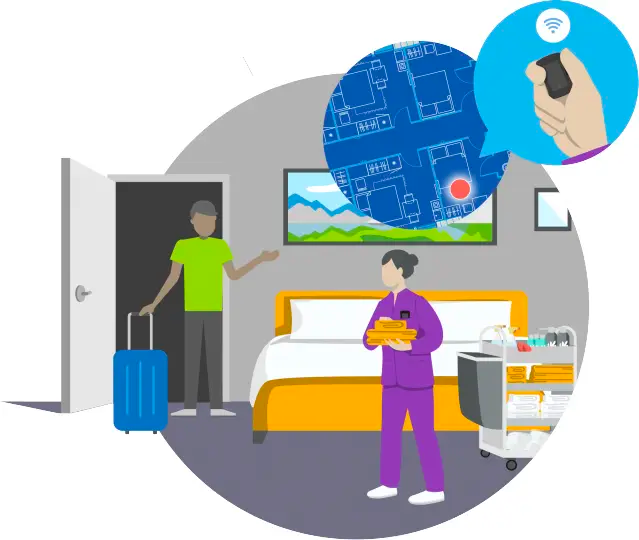Creating Effective B2B Marketing Illustrations
While reading stories to my kids when they were young, I realized that some of our best B2B marketing work was essentially creating “picture books for adults”. When you’re trying to share information with a prospect about a new, complex technological solution they have never heard of before, it’s hard to overstate the value of an intuitive illustration that creates that “A ha!” moment in their mind.
At Altitude, we take pride in our ability to devise and design simple, intuitive, audience-specific illustrations that help bring a solution or topic to life for the audience. I would never venture to say that we’re the best at it, but we have created enough illustrations over the past 20 years to have learned a few things along the way.
Here are some thoughts on our approach that have allowed us to create B2B illustrations for our clients with lasting value. These same illustrations have been frequently repurposed in multiple forms of digital content, from websites to pitch decks, video, infographics, sales enablement guides, product briefs, etc.
1. Understand the intended audience and their level of expertise: While self-evident, this point can easily be overlooked, particularly by internal individuals who are intimately familiar with their solutions. We often see process diagrams created by technical individuals that make complete sense to their colleagues but are either:
Too complex for the audience, or
Include visual elements like icons or process flow that aren’t immediately intuitive.
Even a technical audience might be confused by an illustration that uses visual elements they aren’t familiar with. That is even more true when the target is a non-technical executive.
2. Know the single purpose: What is the one job the illustration needs to do? Is it to show how a solution works or how it is architected? ? Is it to bring the value of the solution to life in a business use case the prospect will recognize? In the words of a popular craft brewery here in Canada (Steamwhistle), we believe an effective B2B illustration should focus on “doing one thing, really, really well”. It’s better to create two illustrations for different purposes than to try to create one that does a mediocre job of both.
3. What’s important? Secondary? Unnecessary?: Less is definitely more when it comes to creating intuitive illustrations. What are the essential components that have to be included? Make sure they stand out and are the focus of the illustration. What additional elements are required to provide context or emphasize a point? Include them but ensure they don’t compete for the user’s attention with the essential elements. What visuals, if included, will end up being more distracting than informative? Leave those out. Some of our best illustrations are so simple they look like they took minimal time to create, but it took considerable thought, discussion and revision to arrive at the final version.
4. Get the concept right, then design: Before a B2B illustration is ever designed at Altitude, there is a preliminary stage where a rudimentary version of the illustration is ‘mocked up’ by one of our content experts. This serves a key purpose. It allows us to test our assumptions with the client relating to our understanding of :
The process, flow, architecture, use cases
The elements the illustration needs to include (and not include) before investing the time in design.
If we immediately design an image without this stage, it’s easy for us and the client to fall in love with how it looks, without asking if it truly serves its purpose for the target audience.
5. Test it: In an ideal world, you could test an illustration with members of the target audience but that’s not always an option. Instead, run it by someone else on your team or an industry “friendly” who has no involvement in the project. If it’s clear enough to make sense to them, odds are it will work for your audience.
6. Create an Image Library: Consider the value of having multiple illustrations that focus on a central theme, and the many ways they can be leveraged. We originally created this group of 29 AT&T Cybersecurity use cases for sales enablement training purposes, but they were quickly repurposed for use across the website, https://cybersecurity.att.com/solutions/healthcare and a variety of digital channels. Carrie Cassée, former Director, Marketing Management at AT&T Cybersecurity and experienced cybersecurity marketing leader, shared:
“Investing the time upfront to collaborate with the Altitude team helped us to clearly define our audiences and use cases. Once they were complete, we realized we could extend the value of our investment, by activating this library of intuitive, audience-specific illustrations across multiple marketing and sales enablement channels.”
Creating an effective B2B illustration isn’t easy and often includes a lot of trial and error but the results can be incredibly rewarding and have lasting value across multiple content formats. I hope these tips were useful to you.
If you’d like to learn more about how Altitude Management can help you create effective B2B marketing illustrations, please reach out to Jennifer Throop.
At Altitude, we’re focused on creating content that delivers the ‘most relevant information’, in the shortest amount of time.




